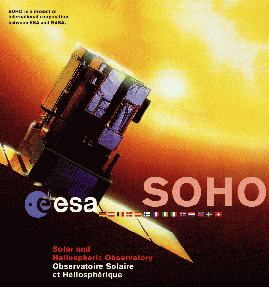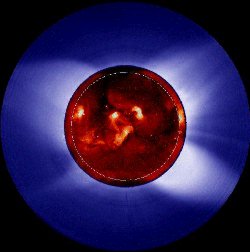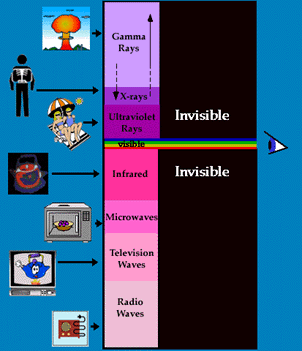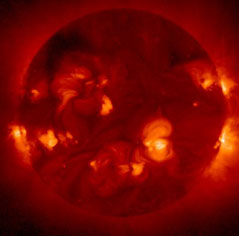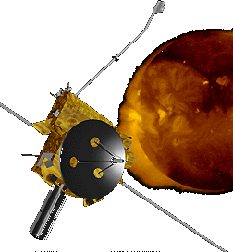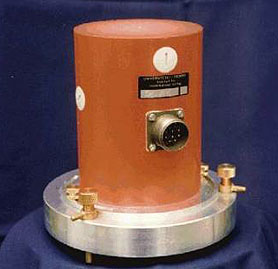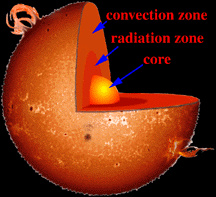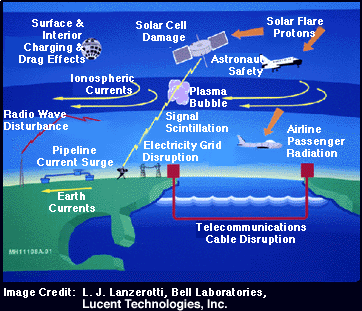Click on image for full size
Image courtesy of NASA
How do Satellites & Spacecraft Monitor Space Weather?
Satellites in space help us measure space weather. They collect info about the Sun, Earth's magnetosphere, Earth's atmosphere, and space weather.
Spacecraft that Watch the Sun
Some spacecraft watch the Sun. They have special telescopes for looking at the Sun and the Sun's atmosphere. Some can "see" the Sun in wavelengths like X-rays. We can't "see" X-rays from Earth's surface, so it's important that we have spacecraft that can!
Spacecraft that Measure the Solar Wind
A solar wind of charged particles flows out from the Sun. Some spacecraft measure the solar wind near Earth. Other spacecraft observe the solar wind near other planets, comets, asteroids or wherever that mission might take the spacecraft.
Spacecraft that Observe Magnetospheres
Earth has a strong magnetic field. Earth's magnetic field actually makes a "magnetic bubble" called a magnetosphere around itself in space. Satellites orbiting Earth observe our planet's magnetosphere to see how space weather is affecting it.
Watching the Aurora from Space
Have you ever seen the Northern (or Southern) Lights? These lights (or aurora) can be seen from Earth. Guess what? They can also be seen from space! Astronauts have taken pictures of aurora. Some spacecraft can also observe the whole auroral oval around a pole at once.
Keeping an Eye on the Atmosphere
Space weather makes changes in Earth's atmosphere. Satellites help us keep track of how the atmosphere changes.
Special Orbits for Space Weather Spacecraft
Some of the spacecraft that observe space weather are in special orbits. Some satellites loop over the North and South Poles in polar orbits that let them watch auroras. Some hang around a special "LaGrange point" between Earth and the Sun.


